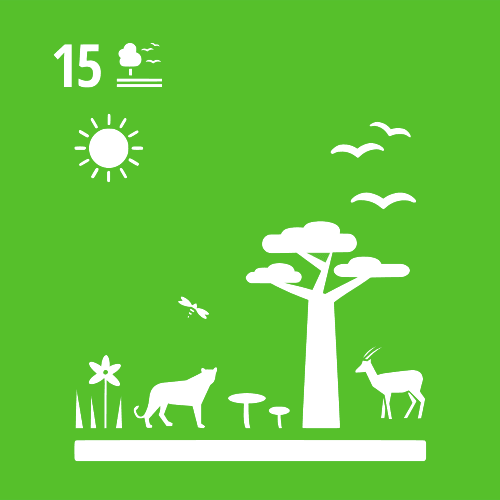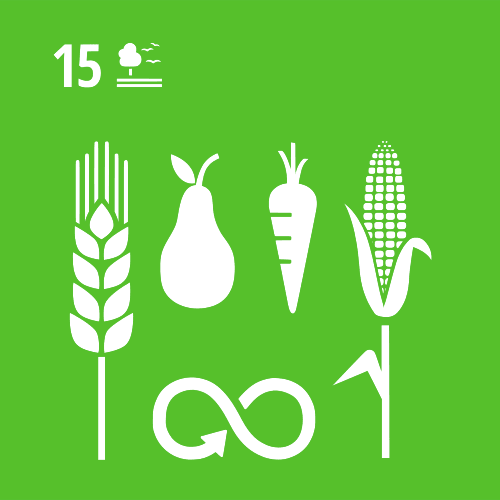Protect, restore and promote sustainable use of terrestrial ecosystems, sustainably manage forests, combat desertification, and halt and reverse land degradation and halt biodiversity loss
SDG 15 is about the quality of the food we eat and of the water we drink, about the basic resources of human activities, and other of the so-called ‘ecosystem services’ which are essential for human life. SDG 15 seeks to protect, restore and promote the conservation and sustainable use of terrestrial, inland water and mountain ecosystems. This includes the protection of ecosystems and biodiversity against natural and human threats, as well as restoration of degraded natural spaces (desertification, deforestation, polluted soils, etc.). Four main priorities have been identified: to sustainably manage forests, combat desertification, halt and reverse soil degradation, and halt biodiversity loss.
However, the situation is not improving fast enough: an estimated 20 percent of the Earth’s land area was degraded between 2000 and 2015. But we can all take part in the improvement of the situation (or at least in the mitigation of information about the degradation). Choosing food sustainably sourced (organic, local, etc.), limiting consumption of goods and energy to our real needs, or reusing and recycling to reduce waste can contribute at the individual level! Acting as a responsible citizen, or even better as an ‘eco-citizen’, is a demand. Eco-citizenship supposes well-informed citizens, aware of the impact of their individual choices and behaviour on the environment. Eco-citizenship also means engaged citizens, able and ready to make some change at home and work in to prevent disturbance of ecosystems and wildlife.
A better connection to our natural environment and stronger empathy with nonhuman life on Earth requires personal life experience and willingness. However, trainers can play the role of a mentor by demonstrating the link between the subject matter they teach and threats to the natural environment related to the specific sector of activity, and by orienting learners towards greener practices and technologies.










